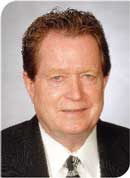Developers Employ Creative Strategies to Stay in the Game
by Edward T. Bullard

Retail development is alive and well in the Kansas City metropolitan area, but is not without challenges.
The time-tested retail development formula of high consumer demand, reasonable land prices, low interest rates, not to mention quality local retail developers has resulted in new projects on both sides of the state line and in all four “corners” of the Kansas City area.
To name but a few, the 815,000 square foot retail, hotel and convention development in Independence anchored by Bass Pro Shops is set to open in February 2008. RED Development, LLC, currently has several developments underway in the metropolitan area.
The Briarcliff Village Northland project is 100% leased with its last anchor tenant, Nell Hills, expected to take occupancy at the end of November. Copaken’s sizeable Lenexa City Center retail development at 87th and I-435 is moving forward.
Several of those factors necessary for continued development in Kansas City, however, appear to be under pressure. For example, areas where demand is high also often bring high land prices. Further, the most desirable anchor tenants usually have more than one developer competing for their bus-iness, and competition can mean lower returns for the developer unless other factors are present to increase returns. Even the non-anchor retain tenants often have leverage to demand more competitive rates, which also puts pressure on developer returns.
Increasingly, developers are looking for support from local government in the form of public incentives to fill the gap and make projects economically feasible, according to Bill Schultz, Vice President for Development for RED Development. The RED Development projects of Summit Fair and Adams Dairy Landing involve some layers of local government support. The Briarcliff Village development involved a TIF Plan for assistance with utility and public infrastructure improvements. It is indeed rare to find a new retail project where public support is not desired, if not required, to make it feasible.
The key to government support is often to match the consumer/retailer demand in an area where local government is anxious for the kinds of public infrastructure improvements which can often ac-company new retail development. Some cities, however, (Overland Park, for example) appear to be more selective in approving public incentives. Concerns by KCMO Mayor Mark Funkhouser on the use of public incentives and entitlements to fuel development is another example of the increased scrutiny retail and other developers are facing.
Successful new retail developments may be those which can combine government support and differentiate themselves from other developments (existing and proposed). Briarcliff Village development is a good example of a project with a focus on obtaining some of the best unique local tenants, such as Nell Hills, Tivol’s and Green Acres Organic Market, and a superior architectural design to create a sustainable center with prospects for good long-term value. Ac-cording to Nathaniel Hagedorn of Briarcliff Village, the goal is not necessarily to sign the tenants who will pay the most rent on a square foot basis or tenants located in other centers throughout the metropolitan area. Differentiation and sustainability are often more important than the quick turn of a profit.
Although most retail developments involve some degree of speculation in hopes of lease-up, some local developers such as The R.H. Johnson Co., which has been a player in the retail market in Kansas City for 20 plus years, stays away from speculative projects. Randi Lefko reports that her company’s projects are always driven by tenants who rely on R.H. Johnson to locate and develop retail sites but admits that deals are increasingly harder to make and lease-up is taking longer.
Enthusiasm still exists for additional retail growth in Kansas City. Audrey Navarro of Kessinger Hunter points to the explosive growth of retail in Kansas City, Kansas, Southern Johnson County and the Eastern Jackson County corridor and predicts that developers will be more creative with mixed-use sites, creative site plans and finding ways to entice tenants to Kansas City which have not previously been a part of the retail scene here.![]()
Edward T. Bullard is Partner Real Estate Section, Corporate Law Division Shook, Hardy & Bacon, LLP.
P | 816.559.2089
E | ebullard@shb.com